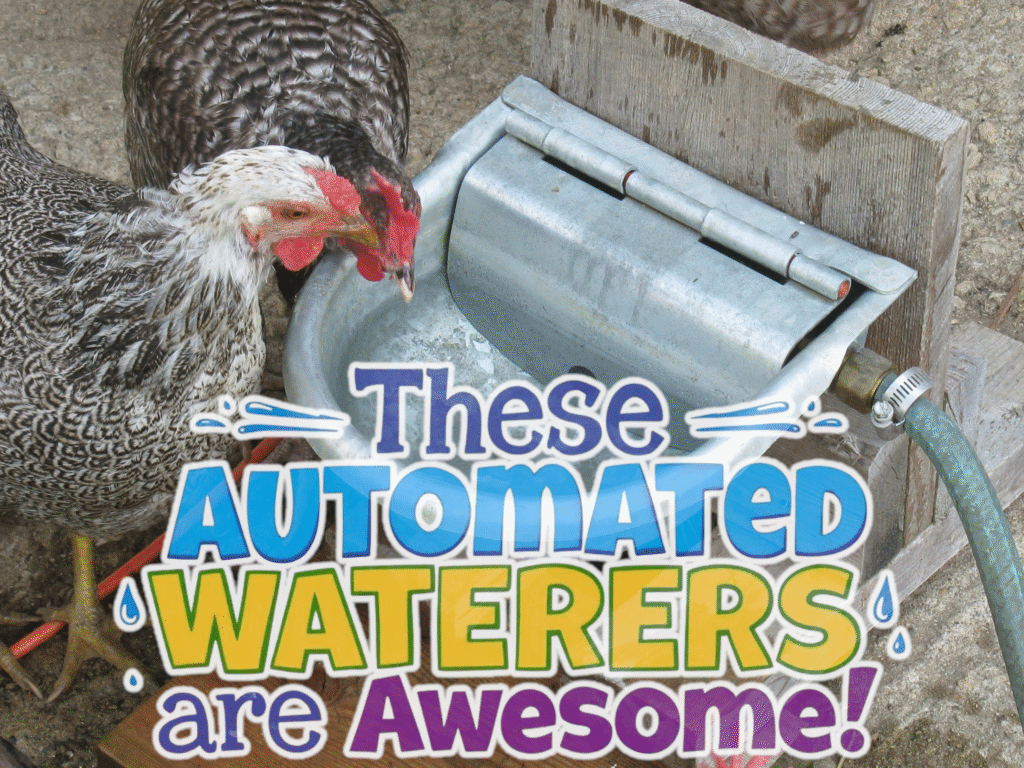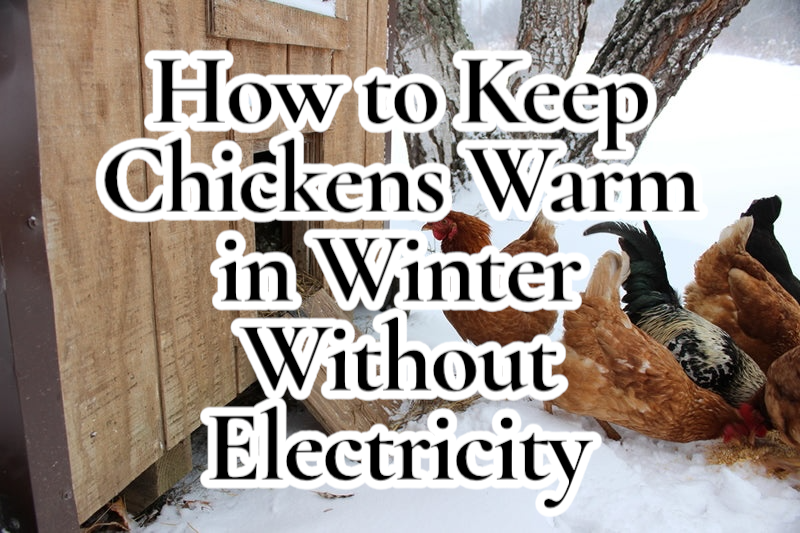
How to Keep Chickens Warm in Winter Without Electricity
How do you keep chickens warm in winter without electricity? That’s the question I asked myself during my first cold season with backyard chickens. I had no heat lamps, no fancy heated flooring — just a regular coop and a Midwest winter coming fast.
The good news? Chickens are a lot tougher than people think, and with the right setup, they can handle the cold without you running an extension cord across your yard.
Choose the Right Chicken Breeds for Cold Weather
Before winter even hits, one of the best things you can do is raise breeds that naturally tolerate cold. I didn’t know this starting out, but some chickens are just built for it.
Here are some of my favorite cold-hardy breeds:
- Orpingtons – Fluffy, friendly, and great in the cold
- Plymouth Rocks – Tough and reliable layers year-round
- Australorps – These birds can handle low temps like champs
- Rhode Island Reds – Hardy, hearty, and good producers even in snow
These breeds have thick feathering and strong immune systems. I noticed a big difference once I started choosing my birds based on climate needs instead of just how pretty they looked.
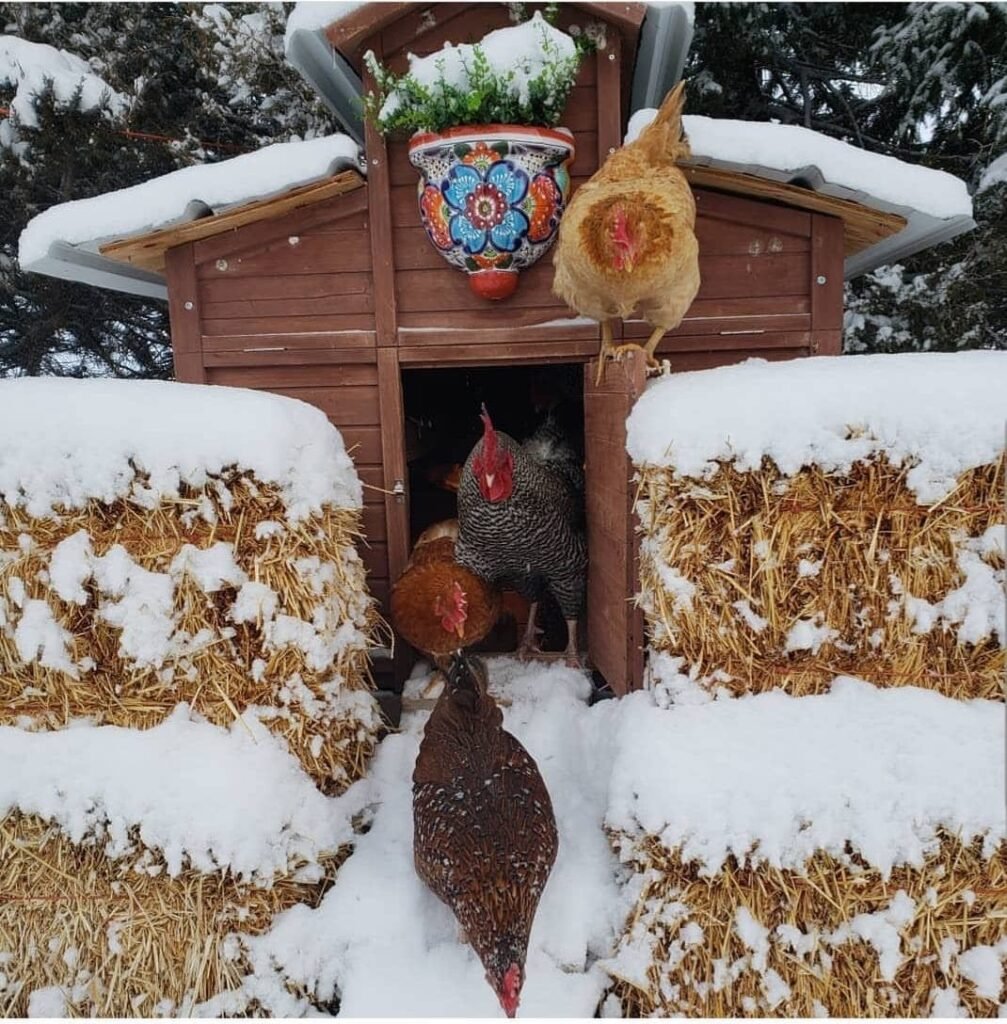
Insulate That Coop — But Let It Breathe
When it comes to how to keep chickens warm in winter without electricity, insulation is key — but so is ventilation. You don’t want moisture to build up, or you’ll have frostbite problems even if the coop stays “warm.”
What worked for me:
- Thick bedding layers (I use straw or pine shavings)
- No drafts near the roosts, but open ventilation at the top
- Sealed cracks using foam or weatherproofing strips
- Plastic sheeting over wire mesh windows (only during freezing temps)
I made sure the air could still circulate above their heads. Chickens generate a lot of moisture overnight, and if that moisture can’t escape, it becomes a cold, wet frostbite nightmare.
Orient and Design Your Coop for Maximum Warmth
A well-designed coop makes all the difference when you’re learning how to keep chickens warm in winter without electricity. Here’s what I did:
- South-facing windows: I added a small, glazed window on the south side to catch as much daylight as possible. Winter sun heats the coop naturally, and my hens love basking in that glow.
- Overhangs and eaves: I extended the roof beyond the walls so rain and snow can’t pile up right against the siding, keeping the walls drier and warmer.
- Double-walling: In colder months, I slip in removable plywood panels between the studs and interior sheathing. It adds a few degrees of insulation without trapping moisture.
- Elevated coop: Raising the coop off the ground by 12–18 inches helps prevent damp cold seeping in. It also keeps bedding drier.
If you struggle with drafts or chill, check out my guide to stop chickens from pooping in nesting boxes—the principles of airflow control are similar.

Heat Your Coop Naturally with the Deep Litter Method
One of my favorite hacks for how to keep chickens warm in winter without electricity is the deep litter method. It’s basically composting bedding in place, and it generates surprising warmth.
- Start with a thick base: Lay down 6–8 inches of pine shavings or straw.
- Add droppings and bedding daily: As your hens’ droppings mix with the shavings, beneficial microbes break everything down and release heat.
- Turn it weekly: Use a small pitchfork to fold the bottom layers on top, just like you’d turn a garden compost pile.
- Maintain 8–12 inches depth: Top off with fresh bedding as needed to keep moisture and odors in check.
In my coop, temperatures inside stay 10–15°F warmer than outside air, all without a single watt of electricity.
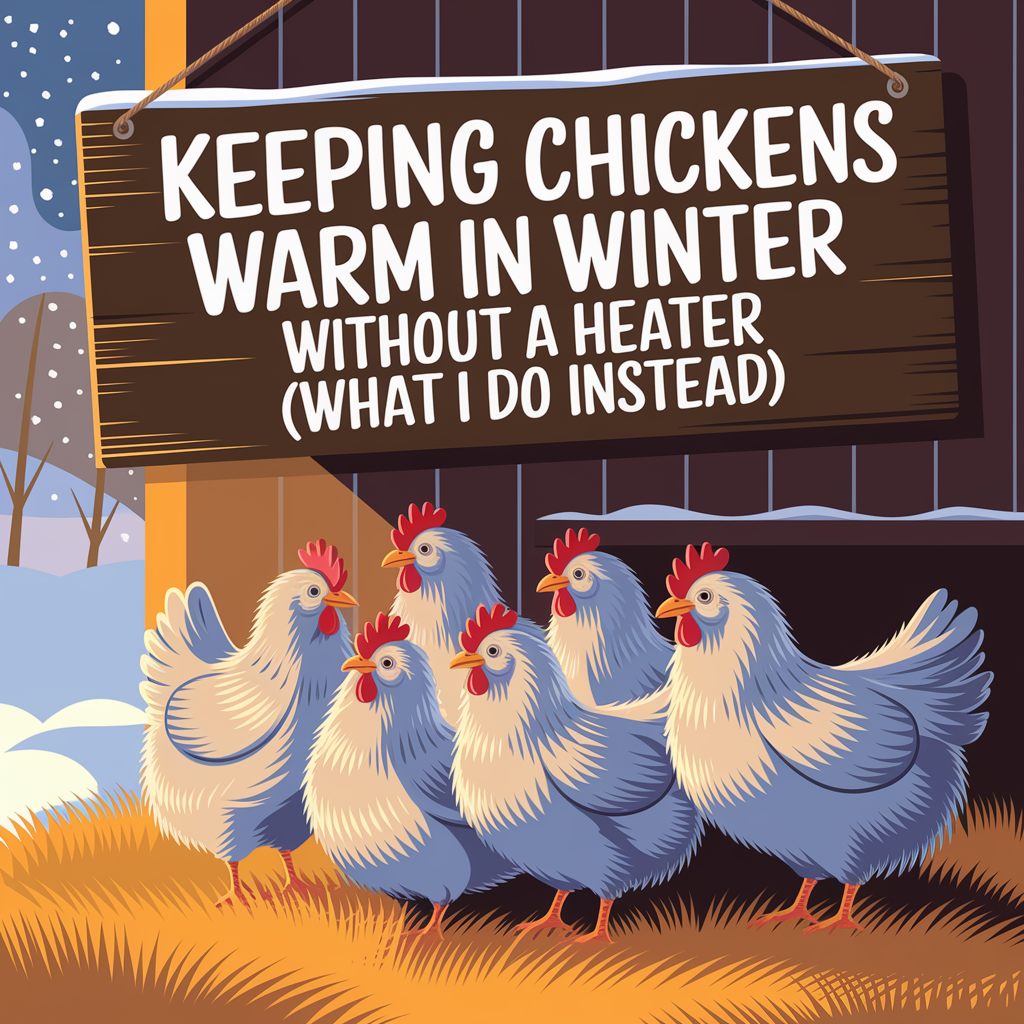
Block Wind with Strategic Windbreaks and Curtains
Cold draft is your enemy when you’re raising a flock sans heaters. To shield my hens from biting winds, I’ve used:
- Outdoor windbreaks: A simple row of hay bales or a pallet fence on the windward side of the run cuts wind chill dramatically.
- Heavy-duty coop curtains: I hang canvas or tarp strips over the main access door at dusk. They flap enough to let roosting hens in, but keep gale-force gusts out.
- Vegetation barriers: Planting evergreen shrubs or bramble patches near the coop can serve as a permanent windwall over time.
All of this helps your coop stay dry and your hens retain body heat—key to keeping chickens warm in winter without electricity.
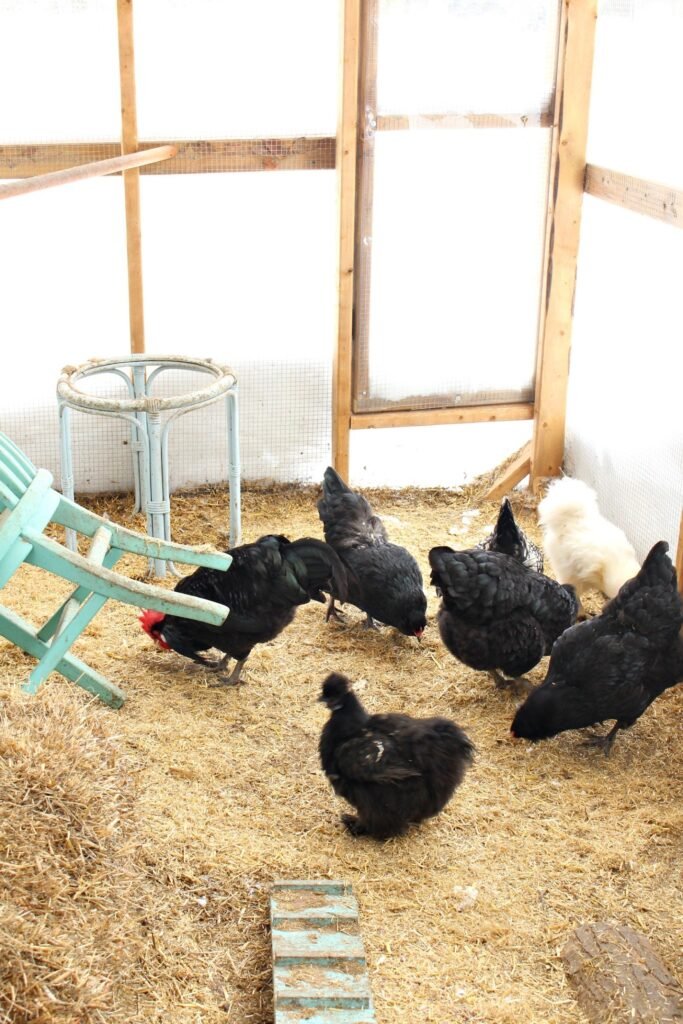
Feed High-Energy Treats to Fuel Body Heat
When winter hits hard, your chickens need extra calories to stay warm. I up their intake of high-energy snacks like:
- Scratch grains tossed into the bedding at dusk — this encourages natural foraging and helps keep them active before bedtime.
- Black oil sunflower seeds (BOSS) — rich in fat and protein, these are winter gold for body heat.
- Cooked oats or warm mash on freezing mornings — it’s like serving them a cozy breakfast.
Just be sure these treats supplement, not replace, their complete layer feed. For more feeding tips during the cold months, check out our breakdown of what chickens need to survive—especially section #4 on nutrition.
Close Coop Vents at Night—But Leave Some for Airflow
It’s tempting to seal up every crack when it’s frigid, but chickens still need fresh air to avoid ammonia buildup. The trick is balancing ventilation and warmth:
- Seal lower drafts: Block any openings near the floor or roosting level. Cold air settling low is the worst for frostbite.
- Keep upper vents open: I leave small gaps near the roofline to let moist air rise and escape—this keeps humidity low and prevents condensation on combs and wattles.
- Use hardware cloth, not plastic sheeting: It protects from predators but still allows breathability. Avoid plastic wrap—it traps moisture and causes rot.
This combo has kept my flock healthy without heaters, even during a Missouri snowstorm that dropped us to 0°F.

Keep Water from Freezing Without Electricity
One of the biggest headaches in winter is keeping your flock’s water liquid. Here’s how I’ve done it without plugging anything in:
- Use black rubber bowls: They absorb solar heat during the day and make it easy to knock out ice and refill.
- Swap bowls twice a day: I keep two sets on hand and just rotate them morning and afternoon.
- Insulate the base: I’ve used an old tire filled with straw and placed the water bowl inside—it holds heat surprisingly well.
- Move it inside the coop: Just make sure it’s spill-proof, so the bedding doesn’t get soaked.
Still, if you’re open to occasional power use or solar tricks, this heated water bowl has saved me more than once when I couldn’t get out to swap frozen water. Just plug it in for a backup option when you really need it.
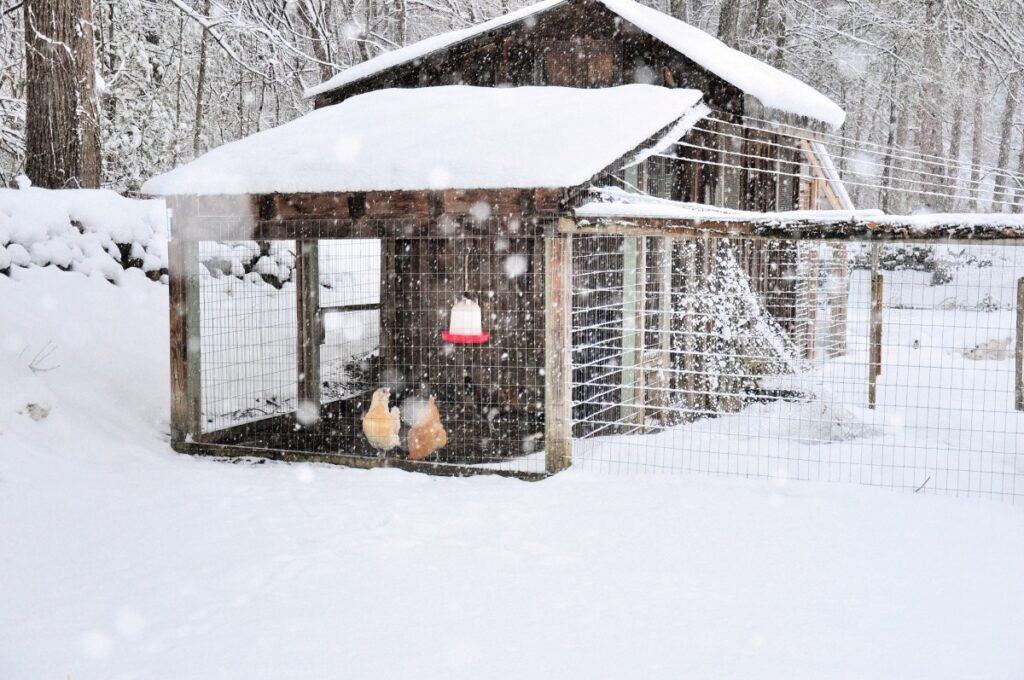
Final Winter Chicken Care Checklist (Yes, I Actually Use This)
When the temps drop and the winds howl, this is the checklist I tape right to the inside of my coop door—no joke. It’s saved me from forgetting the little things that make a big difference.
Daily Must-Dos:
- Check water first thing in the morning and before sunset. If it’s frozen, swap or use a heated bowl.
- Look over each hen’s comb and feet for signs of frostbite (white tips or swelling).
- Toss out scratch grains in the evening to fuel overnight warmth.
- Fluff and dry out bedding as needed. Damp shavings = frostbite central.
- Quick headcount! Make sure no one is sleeping in the nesting boxes or looking sluggish.
Weekly Winter To-Dos:
- Refill grit and oyster shell trays—they still need to digest feed and build strong eggs.
- Rotate enrichment: hang a cabbage, scatter mealworms, or toss in a mirror.
- Check vents for ice or blockages—ventilation matters even in below-freezing temps.
- Do a coop “sniff test.” If ammonia hits your nose, it’s time to swap or stir bedding.
If you’ve made it through this whole article, your flock is already better off. 🐔 For a look at how I don’t spend a fortune doing all this, check out how much it really costs to raise chickens—you’ll be surprised what you can do on a budget.
As an Amazon Associate we earn from qualifying purchases through some links in our articles.


